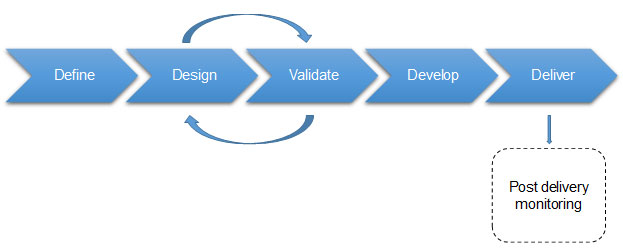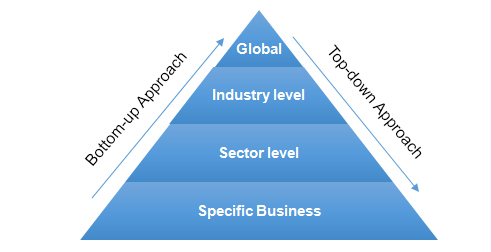Research Methodology
The research methodology involves data assimilation through both primary and secondary source, besides leveraging our in-house database. The data thus collected goes through various checks and analysis to arrive at the final quantitative output. Post this stage, it is subject to a series of cross checks where we verify the final result with industry experts and participants, which typically includes industry players/representatives across the value chain ranging from OEMs to high-scale distributors and retailers. The steps involved in the process of research are as follows:

Define: This stage includes
- Defining business and research objectives
- Defining the scope of the study
- Defining timelines and distinct phases of project development
Design: This stage includes
- Designing structure of the report
- Identification of deliverables in the report
- Business models, tools, etc. to be used
- Review of deliverables
- Finalization of deliverables
Validate: This stage includes
- Data collection and assimilation from various sources
- Segregation and analysis of data collected using various techniques
- Cross-referencing of data with in-house and external databases
- Cross-checking data with various players across the value chain including raw material suppliers, manufacturers, distributors & suppliers, and end-users
- Validation of data with industry experts, and internal SMEs
Develop: This stage includes
- Finalizing the structure and content of the report
- Finalizing on qualitative and quantitative parameters
- Incorporation of qualitative and quantitative data in the report
- Inclusion of other data in the report such as scenario assessments, etc.
- Compilation of data
Deliver:This stage includes
- Delivery of the final report
- Delivery of any supporting content
- Post-delivery monitoring: This stage includes:
- Post-sales analyst call
- Post-sale assistance for customization
Market research approaches
We use a mix of top-down and bottom-up approach to estimate and project the growth of the market over a define forecast period. We utilize these methods to understand the historical movement of the market which helps us in analyzing the future growth trends.
Top-down Approach:
With the top-down approach, we breakdown the global industry into different components where the overview of the market is formulated. Each segment is further analyzed and broken down into sub-segments. These components are then analyzed to understand the impact of their movement on the global market.
Bottom-up Approach:
In the bottom-up approach, individual components that are part of the global market are pieced together and summed up to arrive at a total. The bottom-up approach is used to formulate the sizing of the global market.

Our data is triangulated by referring to various secondary sources and cross-validating it against our findings through primary research. The primary interviews and surveys derive directions from extensive secondary research. Secondary research is a continuous process and is conducted at each level along the value chain.
